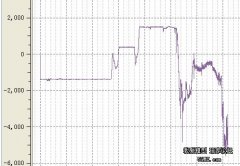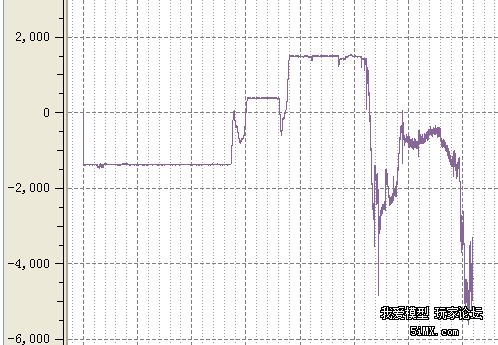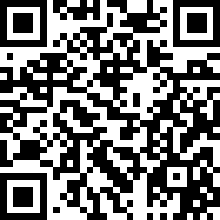Unmanned Aerial Vehicle Technology Post: Matters Concerning Compass Interference
TIME:2015-09-04 17:10:03

Model users of DJI aircraft are very afraid of encountering the "nightmare" of
"compass interference". Whenever the APP prompts "compass interference", their
mood immediately becomes very nervous, as if unpredictable danger is about to
occur. In order to avoid "compass interference" problems, model users habitually
calibrate their compass before flying, but even so, this prompt still appears in
the air, which inevitably makes people angry and confused. Here, based on
personal opinions, we will analyze the reasons for "compass interference" and
its impact on the quality and safety of drone flight without a systematic
approach.
(1) The core of upper level applications To clarify the issue of compass interference, we should first talk about
the GPS sensor. In my opinion, GPS is simply the heart of various apps and smart hardware
nowadays. With GPS, a series of location-based services have emerged: Baidu Maps
uses GPS to locate and plan routes and recommend various entertainment services
around them, WeChat/QQ recommends friends around them through location
information, Uber/Didi recommends drivers and passengers around them through
location information, Meituan/Nuomi recommends food around them through location
information, and Ctrip/Tongcheng recommends hotels and attractions around them
through location information, Various sports apps and intelligent hardware for
sports use GPS to calculate the mileage, speed, and calories burned during
exercise. Intelligent alarm hardware also monitors the loss of bicycles or
children through GPS, and so on. So, GPS has given birth to a massive number of
services, created countless job opportunities, and brought incredible changes to
our lives. (1.1) GPS based upper layer application of unmanned aerial vehicles To get to the point, drones can be said to be a combination of apps and
intelligent hardware, and naturally have a great relationship with GPS. Now
let's take a look at what high-quality services GPS has brought to drone users
in its upper level applications: ① Smooth hovering. Those who fly over the attitude mode know that the
airplane will drift on the horizontal plane in this mode. Every time you take a
photo, you will be distracted by controlling the airplane's movement and unable
to focus on the beautiful scenery of the camera. ② Accurate return flight. Without GPS, mods will not be able to activate
one click return when the plane is out of sight, allowing the plane to fly back
smoothly and automatically, nor can it fly back when low voltage occurs
again. ③ Low battery warning. Without GPS, the aircraft will not know its distance
from the takeoff point, and cannot calculate the current remaining battery level
in real time based on the distance, so it should return. ④ Ground station services. Without GPS, mods will not be able to guide the
aircraft's waypoint on the ground station, and will not be able to automatically
complete functions such as waypoint tracking and hotspot surround. ⑤ Follow Me. Without GPS, the Follow Me function based on GPS cannot be
implemented. ⑥ APP trajectory display. Without GPS, model users will no longer be able
to fly beyond line of sight by watching the trajectory of the aircraft on the
app. ⑦ Various industry applications. Without GPS, various industries such as
transportation, monitoring, and agriculture would also be unable to operate. So, without GPS, drones would appear completely unintelligent. (1.2) GPS based navigation system Let's take a look at what information GPS, as a sensor, brings to the
navigation system. A navigation system can be simply understood as a system that
processes various sensor information to output information such as position,
velocity, attitude, and heading. Nowadays, the navigation systems of drones are
all integrated navigation systems, with integrated sensors including important
inertial measurement units (IMUs) such as accelerometers and gyroscopes,
compasses, GPS, visual sensors, radar, ultrasound, and so on. After adding GPS,
the navigation system will obtain the following observation information: (1)
position in the world coordinate system and (2) velocity in the world coordinate
system. With GPS position and velocity information, navigation systems can
theoretically process this rough information, allowing drones to know their
position and velocity in the world coordinate system. But all of this is not that simple, please refer to the next section "(2)
Drones have no sense of direction". (2) Drones have no sense of direction Give a common scene of asking for directions: Ctrl: 'May I know how to get to Wanda Plaza?' Navi: 'Walk 300 meters north and then 100 meters east to get there.' Ctrl: 'Sorry, I don't have a sense of direction, I don't know where the
north is.' Navi: 'Okay, to put it another way, you go ahead 300m, then go right 100m
and you'll be there.' Ctrl: 'Understood, thank you.' In this scene, when Navi guides Ctrl in an east-west, north-south manner,
Ctrl does not understand because it lacks a sense of direction. But when Navi
guides Ctrl in a forward, backward, left-right, left-right manner, Ctrl
understands how to go. From this conversation, we can find the concept of drone
coordinate system in the corresponding area. The coordinate system of drones
generally has two coordinate systems: the "world coordinate system" and the
"body coordinate system": ① The world coordinate system can be simply understood as a coordinate
system defined in an east-west, north-south manner. ② The ontology coordinate system can be simply understood as a coordinate
system located in a forward, backward, left-right manner. GPS is in the world coordinate system, telling drones their position and
speed in the world coordinate system. Unfortunately, drones also lack a sense of
direction! The favorite way for drones to move is to fly left or right, rather than
east or north. So, in flight control, coordinate conversion must be performed to
convert the "world coordinate system" to the "body coordinate system". Returning to the scene of asking for directions, if Ctrl has a good sense
of direction, he can immediately search for where the north direction is, and
then convert Navi's north direction to forward direction based on Navi's first
sentence. The same goes for drones, which need to find their relative direction
in front and north in order to understand the position and speed in the world
coordinate system. An important sensor that shoulders this responsibility is the
compass. Speaking of this, it seems that we have just entered the main
topic. The compass of a drone may seem insignificant, but it actually plays a
significant role. In order to enable various core services based on GPS, drones
need to use a compass to connect "world coordinates" and "body coordinates". (3) A single wooden bridge connecting two worlds Heading is a single wooden bridge that connects the world coordinate system
and the body coordinate system. If it deviates, it will fall into a vortex. Let's give a scenario first: A accidentally crashed in the desert and was able to survive. He decided to
carry food on his back, choose a direction, and keep walking forward without
turning, hoping to get out of the desert. However, a few days later he
discovered the wreckage of an airplane. He despairingly found himself returning
to the place of departure. In this scene, A kept walking forward and finally made a detour back to the
original position, for a simple reason. Although A keeps walking forward, if
there is no fixed reference object in front to correct their step when walking,
they will slowly deviate from the initially set front due to the slight
difference in step length between their legs, and eventually walk out in an arc.
People who walk with their eyes closed can also have a similar experience that
if they don't take ten steps, the direction is actually crooked. In the desert,
due to the lack of a fixed distant reference, A unfortunately walked in a huge
circle. He keeps moving forward, but his front is constantly changing. Returning to drones, what would happen if the assumed heading always has a
significant error angle with the actual heading. It will circle in the air, which is "going off course and falling into a
vortex": ① If it is in a hovering state with small heading error and relatively low
speed, then draw a small circle in the air, which shows unstable hovering. ② If flying at high speed with a large heading error, it will manifest as a
large circle. Note: The reason for appeal reasoning is only a sufficient condition for
the result, not a necessary condition. (4) What happened will never be forgotten Abstract: Compass interference is not a transient quantity, it has
historical attributes and is related to previous states, so there will always be
clean geomagnetic measurements in clean places. Introduction: Why do drones still encounter compass interference at high
altitudes, even though there is nothing, it is really puzzling?. In this
section, let's talk about these confusing things. Quoting a thought expressed by
Mr. Hayao Miyazaki in "Spirited Away": "Please never forget what happened, it's
just that you can't remember it.". Try to make everyone understand this
principle as simply as possible, but still include some obscure content. Supplementary knowledge 1: The compass is a sensor that can measure the surrounding magnetic field
vector (measuring both the magnitude and direction of the magnetic field). That
is to say, strictly speaking, the compass should be called a "magnetic compass".
Now, it is necessary to understand the concepts of magnetic field, geomagnetism,
and northbound direction: ① Magnetic field, the superposition of all magnetic fields in a certain
place, including: geomagnetism, magnetic fields generated by large surrounding
magnetic materials such as reinforced concrete, and magnetic fields generated by
surrounding currents. ② Geomagnetism, the magnetic field caused by the Earth as a whole, varies
in direction and magnitude in different places. ③ North direction can be simply understood as pointing towards the North
Pole along the ground. Let's discuss the relationship between these concepts again: ① Magnetic field is not equal to geomagnetism, but most of the time,
geomagnetism is the main component ② The direction of geomagnetism is not equal to north, but most of the
time, it can be corrected to north by compensating for the magnetic declination
angle (the difference between the local magnetic field direction and north). From the perspective of the formula, we can express it as: 1) Magnetic
field=geomagnetic+magnetic interference (other magnetic fields) (Equation 2)
North direction=magnetic field direction - magnetic field direction deviation
caused by magnetic interference - magnetic declination of the geomagnetic field
itself. Supplementary knowledge 2: Nowadays, there is a compass on mobile phones, and it usually has a
calibration operation, which may not be familiar to those who have used it. The
drone also has a compass calibration operation. So what is the compass
calibration on this phone and drone really doing? In fact, they use rotating
mobile phones to calculate the amount of magnetic field interference. The
reading of the compass, subtracting the local magnetic field interference,
approximates geomagnetism, referring to equation 1. The magnetic declination of
the Earth's magnetic field can be found at a specific location, which can also
be subtracted later. This way, the compass can obtain a relatively accurate
estimate of the north direction through equation 2. To get to the point, how did the interference from the high-altitude
compass come about? There may be many reasons, but let's imagine a scenario like this: A calibrated the compass in place A, obtained an estimate of the
interference level of the compass in place A, and saved it in the aircraft chip.
Then A flew in place B, and the interference level of the compass in place B was
significantly different from that in place A. Unfortunately, drones always
subtract the previously calibrated compass interference estimated in ground A,
so we will find that the drone's measurement direction is not north because it
subtracts an incorrect compass interference. In short: (1) Calibrated in a clean place, flying in areas with interference is
problematic. (2) Calibrated in an unclean place, flying in an undisturbed area is also
problematic. When calibrating, the interference it receives from the compass will
continue to affect future flights, even in open air, and it will have to endure
past mistakes Okay. " Model enthusiasts will say, "Then I can only calibrate
before each flight, but why is it still not as good as expected?" Then please
wait for the next episode: "(5) Information is Fragmented" (5) Information is fragmented Abstract: Fragments of heading information are scattered on different
sensors, not just the compass, so the compass has no interference and may not
necessarily estimate the heading well. Introduction: Einstein said, "The law of entropy is the most scientific
law.". The concept of "entropy" may seem abstract at first glance, but it
doesn't matter. We can still gain a vivid understanding of it from a very
popular perspective. When teaching perpetual motion machines in high school
physics, the law of entropy increase was introduced: "In natural processes, the
total chaos (i.e." entropy ") of an isolated system will not decrease." That is
to say, the law that Einstein understood as the most scientific law expresses a
central idea: "God probably always likes to mess up tables, just like those
messy engineers." Entropy was originally used to describe thermophysics, but later it was
introduced by Shannon (the father of information theory) to study information,
giving rise to the concept of information entropy. Insert a sentence, what is
information? Simply put, information is "something more certain than completely
random": ① Tomorrow is Friday, this is the information; ② The price of gold is 80% likely to rebound in the next month, which is
information; ③ The heading of the drone is 30 degrees northeast, which is
information. The more certain the information is, the smaller its information entropy
is. However, God always likes to tear intact information into pieces, making
people struggle to piece it together. Today, let's talk about: "What kind of fragments did God tear apart the
heading information of drones?" The essence of compass interference problem is inaccurate heading
estimation. Of course, the sensors that can sense the heading are not known to
be the compass. In theory, sensors that change with just one turn of the head
contain fragments of heading information. Just follow the philosophical
principles in the introduction to understand the problem of heading estimation,
and mods will be able to break away from the relatively singular understanding
of compass interference, which not only leads to inaccurate heading
estimation. The true heading is only known by God. God has torn and crumpled the
heading information, scattering it everywhere. These fragments can theoretically
be collected by different sensors:
The compass picked up crumpled pieces of heading information after God
added magnetic interference, noise, geomagnetic declination, and various sensor
asymmetry.

![[field:title/] [field:title/]](/uploadfile/202504/80f770e46696ba4.png)
![[field:title/] [field:title/]](/uploadfile/202407/0fbb04c355bb2.jpg)
![[field:title/] [field:title/]](/uploadfile/202312/677ac8d034350a8.jpg)
![[field:title/] [field:title/]](/uploadfile/202312/4fa579d8c53d9a6.jpg)
![[field:title/] [field:title/]](/uploadfile/202312/acb5267c9ee2f5d.jpg)
![[field:title/] [field:title/]](/uploads/181130/1-1Q13016350Ha.jpg)
![[field:title/] [field:title/]](/uploads/181130/1-1Q130162Q4D8.jpg)
![[field:title/] [field:title/]](/uploads/181130/1-1Q1301626292U.jpg)
![[field:title/] [field:title/]](/uploads/allimg/181130/1-1Q1301623580-L.jpg)
![[field:title/] [field:title/]](/uploads/allimg/181130/1-1Q1301554200-L.jpg)
![[field:title/] [field:title/]](/uploads/allimg/181130/1-1Q1301543090-L.jpg)


